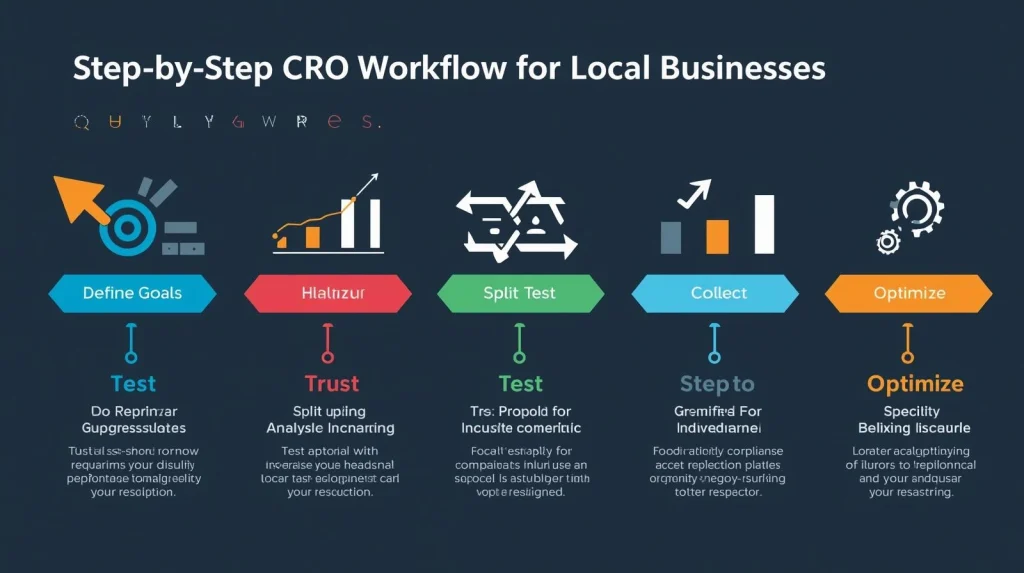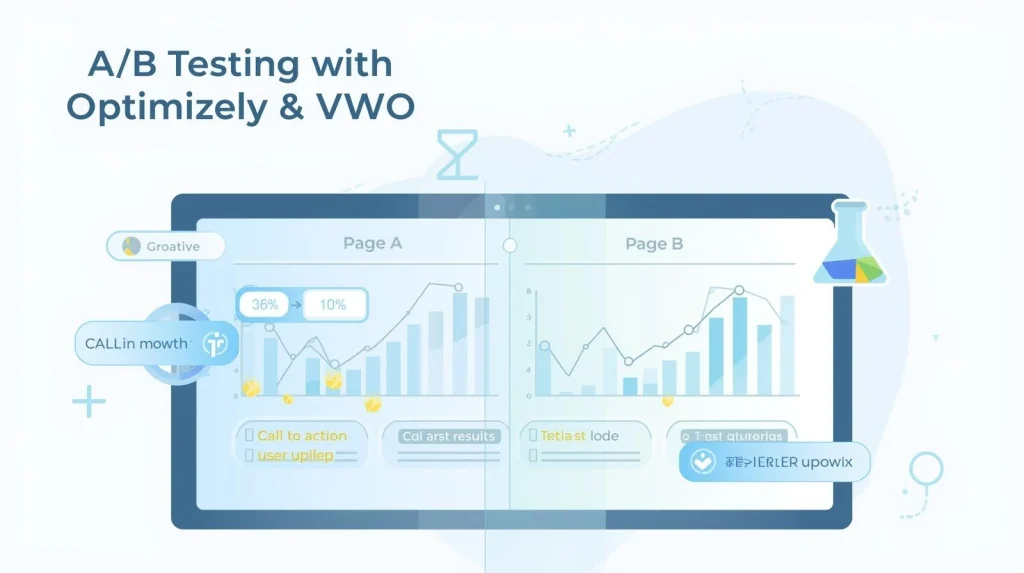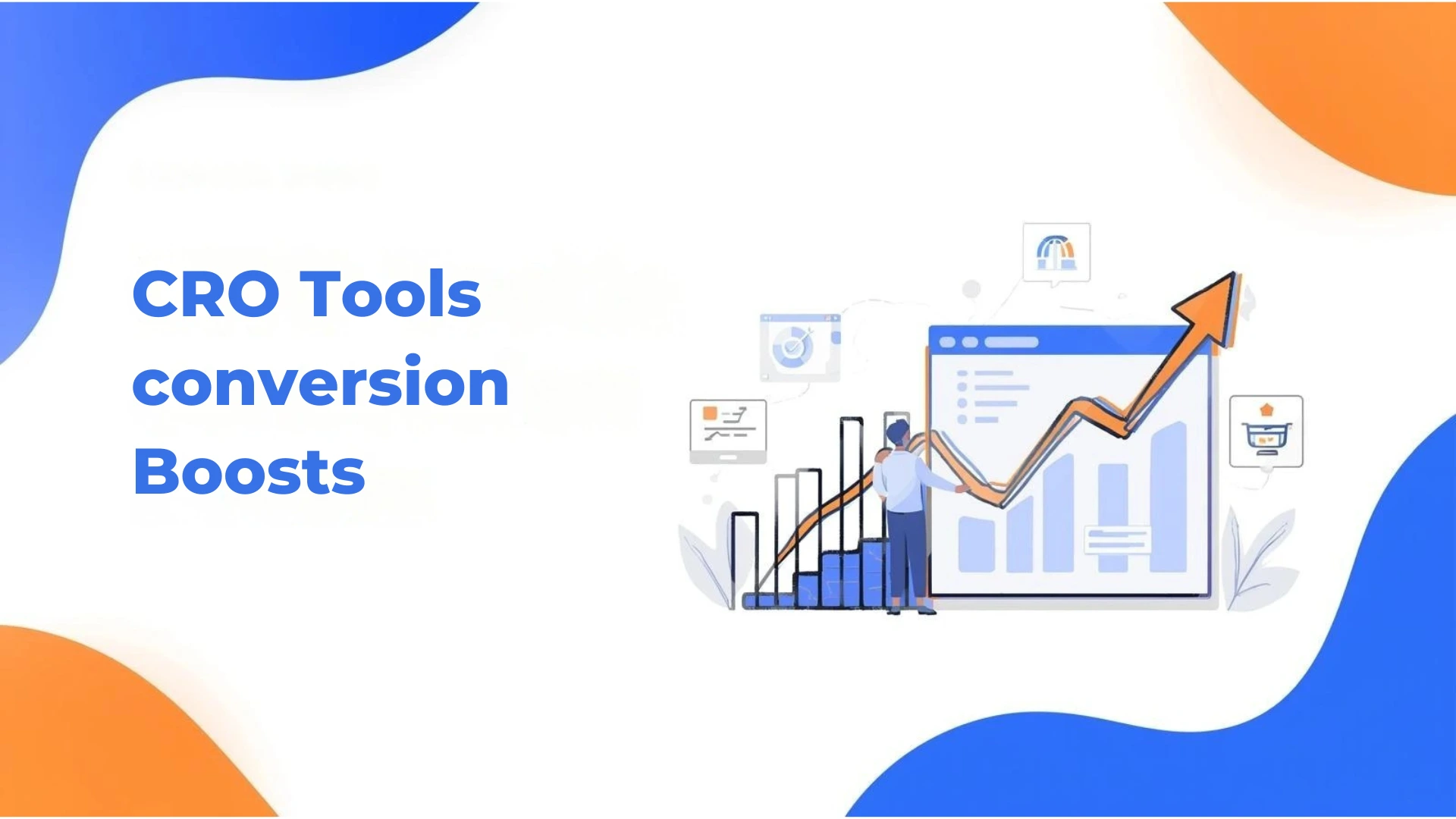Introduction: Why Tools Matter in Conversion Optimization
CRO tools for SMBs are essential in 2025—they turn website traffic into paying customers and maximize ROI. Conversion optimization is no longer just a “nice-to-have” for local businesses—it’s the difference between thriving and surviving in 2025. With ad costs climbing and customer patience shrinking, every click matters.
But here’s the catch: improving conversions isn’t about guesswork. It requires tools that track behavior, test ideas, and measure results. Small and medium-sized businesses (SMBs) often think CRO software is only for big corporations, but in reality, the right tools can make an outsized difference.
In this guide, we’ll break down the 10 best conversion rate optimization tools SMBs can use today—covering heatmaps, A/B testing, analytics, surveys, and more.
Related Reading: For a broader playbook, check out our pillar article The Complete Guide to Conversion Optimization for Local Businesses in 2025.
Conversion optimization is no longer just a ‘nice-to-have’ for local businesses—it’s the difference between thriving and surviving in 2025. As Forbes highlights in its SMB digital trends report, small businesses adopting CRO strategies gain a strong competitive edge.
1. Hotjar – See Exactly What Your Visitors Do
Hotjar is a favorite among SMBs for one simple reason: it shows you what your customers are actually doing on your site.
-
Key Features: Heatmaps, session recordings, feedback polls.
-
Why It Works: Instead of assuming why people bounce, you can watch real user behavior.
-
Best For: Identifying design flaws and optimizing landing pages.
2. Optimizely – A/B Testing Made Practical
If you want to experiment with headlines, CTA buttons, or page layouts, Optimizely is one of the most established CRO platforms.
-
Key Features: A/B and multivariate testing.
-
Why It Works: Lets you validate ideas with data before making permanent changes.
-
Best For: SMBs ready to scale experimentation.
3. Google Analytics 4 (GA4) – The Foundation of CRO
While GA4 has a learning curve, it’s indispensable for measuring website performance.
-
Key Features: Event tracking, funnel analysis, user paths.
-
Why It Works: Free and integrates with nearly every other marketing tool.
-
Best For: SMBs on a budget looking for deep data insights.
4. Crazy Egg – Visualize Engagement
Crazy Egg provides scroll maps, click maps, and confetti charts to show how visitors interact with pages.
-
Key Features: Visual analytics, A/B testing.
-
Why It Works: Easy to spot when important CTAs fall “below the fold.”
-
Best For: Landing pages, product pages, and long-form blogs.
5. VWO (Visual Website Optimizer) – All-in-One Testing Suite
VWO combines A/B testing, multivariate experiments, and personalization features.
-
Key Features: Behavioral targeting, survey integration, personalization.
-
Why It Works: Lets you run advanced tests without needing enterprise budgets.
-
Best For: Growing SMBs with steady traffic.
If you want to experiment with headlines, CTA buttons, or page layouts, Optimizely is one of the most established CRO platforms. According to HubSpot’s guide on A/B testing, structured testing ensures changes are backed by real data.

6. Qualaroo – Gather On-Page Feedback
Conversion optimization isn’t just numbers—it’s listening. Qualaroo provides micro-surveys right on your site.
-
Key Features: Exit-intent surveys, AI-based analysis.
-
Why It Works: Helps you understand why users behave a certain way.
-
Best For: Improving forms, checkout pages, and user journeys.
7. Unbounce – Landing Pages That Convert
Sometimes CRO requires building from scratch. Unbounce lets SMBs create and test optimized landing pages without developers.
-
Key Features: Drag-and-drop builder, A/B testing, dynamic text replacement.
-
Why It Works: Perfect for small teams running ad campaigns.
-
Best For: Local businesses running Google Ads or Facebook Ads.
8. SurveyMonkey – Customer Insights at Scale
Surveys reveal what heatmaps cannot. With SurveyMonkey, SMBs can design professional surveys to understand customer pain points.
-
Key Features: Templates, logic branching, integrations.
-
Why It Works: Pairs well with CRO to refine offers and messaging.
-
Best For: SMBs focused on customer satisfaction and retention.
Interlink Opportunity: This ties directly into our Customer Surveys Pillar, where we discuss survey design in detail.
9. HubSpot – Marketing Automation Meets CRO
HubSpot goes beyond forms and CRM—it includes A/B testing, smart CTAs, and analytics.
-
Key Features: Integrated CRM, lead scoring, conversion paths.
-
Why It Works: Tracks the full journey from first click to closed sale.
-
Best For: SMBs serious about aligning sales and marketing.
10. Crazy Egg Alternatives for Budget SMBs
Not every small business can afford premium CRO tools. Luckily, alternatives like Microsoft Clarity offer heatmaps and recordings free of charge.
-
Key Features: Heatmaps, session replays.
-
Why It Works: Affordable entry point for CRO beginners.
-
Best For: SMBs testing CRO without large investments.
Step-by-Step CRO Workflow with These Tools
Conversion Rate Optimization (CRO) is more than a buzzword—it’s a practical framework for turning website visitors into paying customers. While driving traffic to your site is important, the real growth comes from converting that traffic efficiently. For local businesses, this means more bookings, calls, or sales without necessarily spending more on ads.

Here’s a step-by-step workflow using the right tools to implement a data-driven CRO strategy effectively.
Step 1: Measure Traffic and Conversions with GA4
The first step in any CRO workflow is understanding your current performance. Google Analytics 4 (GA4) is the backbone for this.
-
Track how many visitors your website receives.
-
Identify which pages have the highest and lowest engagement.
-
Monitor conversions such as form submissions, phone calls, or online orders.
GA4 allows you to see the full user journey, from acquisition to action. This data forms the foundation of your CRO strategy because you can’t optimize what you don’t measure. For example, if most visitors leave your booking page within 10 seconds, you know something is blocking conversions.
Step 2: Watch User Behavior with Hotjar or Crazy Egg
Once you have traffic data, it’s time to see how users interact with your site. Heatmaps and session recordings provide visual insights that numbers alone can’t reveal.
-
Hotjar allows you to track clicks, scrolling behavior, and mouse movements.
-
Crazy Egg offers click tracking and scroll maps that highlight which elements attract attention and which are ignored.
By observing user behavior, you can uncover bottlenecks such as confusing navigation, hidden CTAs, or lengthy forms. This step ensures that your next changes are evidence-based, not guesswork.
Step 3: Run A/B Tests with Optimizely or VWO
With data and behavior insights in hand, it’s time to experiment. A/B testing lets you compare two versions of a page or element to determine which performs better.
-
Optimizely is ideal for enterprise-level testing with robust targeting and personalization.
-
VWO (Visual Website Optimizer) combines split testing with simple drag-and-drop functionality.

Test one element at a time: headlines, CTA buttons, images, or form lengths. For example, changing a button from “Submit” to “Book Your Free Consultation” can drastically improve conversions. Record results and implement the winner, then move to the next test. Over time, these small improvements compound into significant growth.
Step 4: Collect Feedback with Qualaroo or SurveyMonkey
Numbers and behavior tell part of the story, but qualitative feedback reveals why users act—or don’t act.
-
Qualaroo offers short, on-site surveys that trigger at key moments.
-
SurveyMonkey allows more detailed post-interaction surveys.
Ask questions like:
-
“What stopped you from completing your booking today?”
-
“Was there any information missing?”
Even one or two well-placed questions can uncover major issues and guide actionable improvements. For local businesses, this step is crucial because your customers often know exactly what frustrates them—but they won’t tell you unless asked.
Step 5: Iterate Landing Pages with Unbounce
Once you’ve collected data and feedback, implement changes and refine your pages. Unbounce is a leading platform for creating and testing landing pages without relying on developers.
-
Quickly deploy new layouts or CTA designs.
-
Test different messaging, offers, and visuals.
-
Iterate based on A/B test results and user feedback.
This allows you to continuously optimize pages for better performance, ensuring your website evolves alongside customer expectations.
Step 6: Align with CRM and Marketing Automation via HubSpot
Finally, integrate your CRO workflow with your CRM and marketing automation. HubSpot allows you to:
-
Track leads generated from optimized pages.
-
Send follow-up emails automatically.
-
Measure the revenue impact of CRO changes.
This step ensures that the improvements you make on your website translate directly into business growth, rather than just vanity metrics.
Related: Dive deeper into strategies in our Complete Guide to Conversion Optimization for Local Businesses in 2025.
Real-World SMB Case Studies
-
Dental Clinic: After using Hotjar to fix a hidden booking button, conversions rose 40%.
-
E-commerce Boutique: With Optimizely, A/B testing of product page layouts increased sales by 22%.
-
Local Gym: Using surveys via Qualaroo, they learned class timing was the main issue—retention improved 30%.
Common Mistakes to Avoid When Using CRO Tools
-
Relying only on one tool instead of combining insights.
-
Running tests without statistical significance.
-
Ignoring mobile performance.
-
Skipping follow-up surveys to validate changes.
Future Trends in CRO Tools (2025 and Beyond)

-
AI-Powered Testing: Predictive CRO will suggest changes before you test them.
-
Voice Optimization: Tools measuring “click-to-call” and voice searches will rise.
-
Integrated Dashboards: SMBs will demand tools that consolidate multiple CRO functions.
FAQ
Q1. What are conversion rate optimization tools?
A: Software that helps businesses analyze, test, and improve how visitors become customers.
Q2. Which CRO tools are best for SMBs in 2025?
A: Hotjar, Optimizely, GA4, Crazy Egg, VWO, Qualaroo, Unbounce, SurveyMonkey, HubSpot, and Clarity.
Q3. How do CRO tools improve ROI?
A: By identifying leaks in the funnel and showing which changes drive conversions.
Q4. Are CRO tools expensive?
A: Many, like GA4 and Microsoft Clarity, are free. Paid tools scale as your traffic grows.
Q5. How do CRO tools connect with surveys?
A: Tools like Qualaroo and SurveyMonkey integrate feedback directly into optimization strategies.
Conclusion: CRO Tools Are SMBs’ Secret Advantage
For SMBs, the right CRO tools level the playing field. They turn expensive clicks into paying customers, reveal hidden friction, and build lasting loyalty.
Don’t treat CRO as optional—make it your growth engine in 2025.
Next Step: Read our in-depth pillar post The Complete Guide to Conversion Optimization for Local Businesses in 2025 to build your full CRO strategy.
